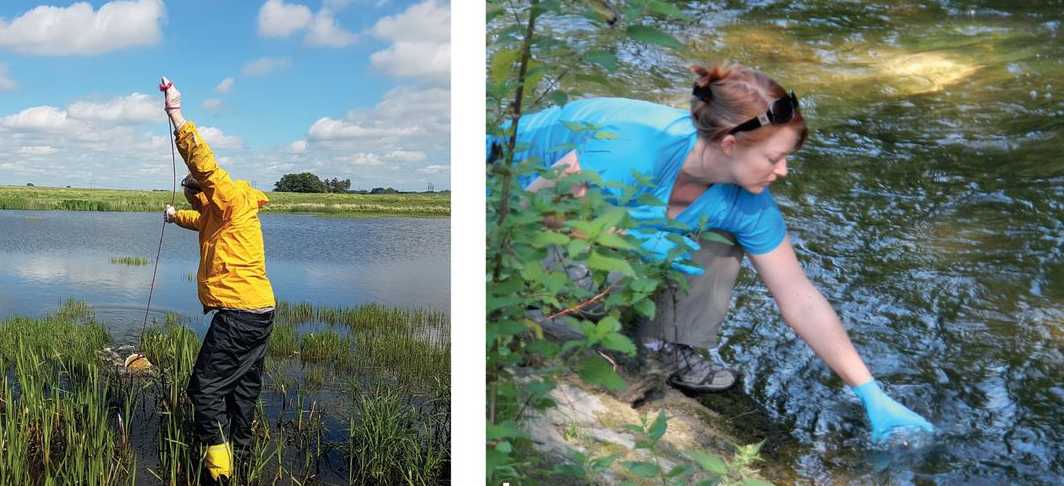A group of international scientists, among them Kristy Deiner from ETH Zurich, have published a practical guide for the implementation of DNA-based biomonitoring tools. Since 2016, over 500 researchers collaborated within the DNAqua-Net international network, with the goal to develop and advance biodiversity assessment methods based on analysis of DNA obtained from the environment or from unsorted collections of organisms.
Innovative methods are a real game changer when it comes to large-scale assessment of biodiversity and ecological monitoring, as collecting environmental samples that are sent to the lab for analysis is much cheaper, faster and non-invasive, compared with capturing and examining live organisms. However, large-scale adoption has been hindered by a lack of standardisation and official guidance.
The guide considers four different types of samples: water, sediments, invertebrate collections and diatoms, and two primary analysis types: single species detection via qPCR and similar targeted methods; and assessment of biological communities via DNA metabarcoding. At each stage of the field and laboratory process the guide sets out the scientific consensus, as well as the choices that need to be made and the trade-offs they entail. In particular, the guide considers how the choices may be influenced by common practical constraints such as logistics, time and budget.
Available in an Advanced Book format, the guidelines will be updated as the technology continues to evolve. DNAqua-Net is funded by the European Union's European Cooperation in Science and Technology programme (COST).
Reference
Bruce K, Blackman R, Bourlat SJ, Hellström AM, Bakker J, Bista I, Bohmann K, Bouchez A, Brys R, Clark K, Elbrecht V, Fazi S, Fonseca V, Hänfling B, Leese F, Mächler E, Mahon AR, Meissner K, Panksep K, Pawlowski J, Schmidt Yáñez P, Seymour M, Thalinger B, Valentini A, Woodcock P, Traugott M, Vasselon V, Deiner K (2021) A practical guide to DNA-based methods for biodiversity assessment. Advanced Books. https://doi.org/10.3897/ab.e68634call_made
Extensive practical guide to DNA-based biodiversity assessment methods published as a 'living' document by DNAqua-Net COST Action: Article of Pensoft, 11 January 2022call_made







